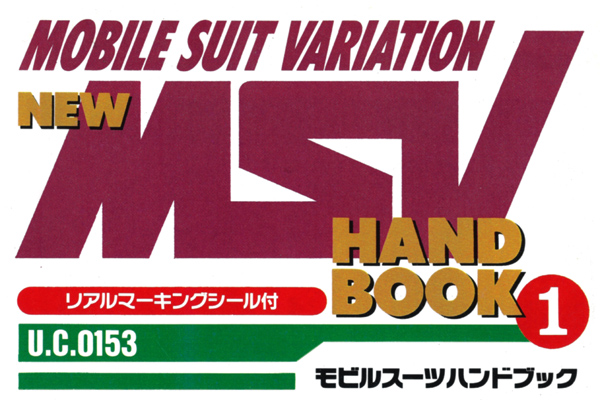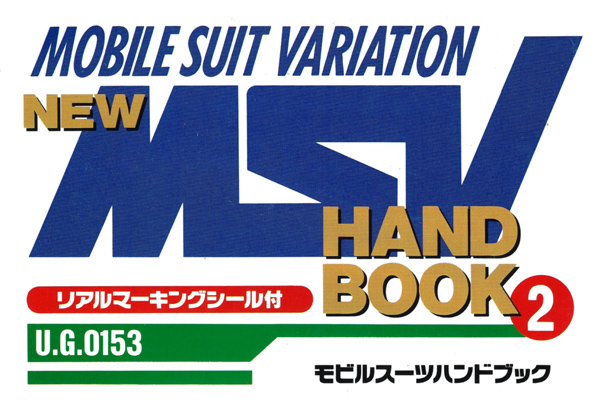BASIC SETTING AND THEN SOME
Gundam Sentinel Basic Setting And Then Some
The Gundam Sentinel project was built upon a foundation of extensive background lore hashed out amongst the creative team. In this piece, we’ll delve into the conceptual underpinnings that shaped the novel, from the earliest pitch documents onward: Gundam’s positionings, fleet compositions, and the rich tapestry of worldbuilding that informed this grand undertaking.
![]()
Gundam Sentinel Novel Explained
New Desides U.C. 0088
Commentary by Masaya Takahashi
As the Earth Federation rallied to purge lingering Zeon remnants in U.C. 0087, the newly-forged Titans—ostensibly their instrument—grew increasingly radicalized. Seizing control of the Federation government under Jamitov Hymen, they swiftly consolidated power before setting their sights on the Spacenoids, the next frontier in their bid for supremacy. Branded as anti-Federation insurgents, resistance groups like the AEUG rose to thwart these designs, their clashes erupting into the armed conflicts that defined the premise of Zeta Gundam.
In many respects, this turmoil echoes a tumultuous decade seared into our historical memory: the turbulent decade from 1858 to 1868, known as the “Bakumatsu” era in our country.
As astute readers have observed, Gundam Sentinel is a saga spun from the same societal threads that Zeta Gundam sought to unravel, framing its narrative against the backdrop of those parallel fault lines. The “Sentinel” of our title alludes not just to some enigmatic sentry (though Bandai’s marketing stratagems remain their own affair) but to our central conceit: to chronicle an age perched on the cusp of metamorphosis is to interrogate the very meaning of the new order that follows. Gundam Sentinel is thus Another Zeta Gundam—not a Parallel ZZ Gundam.
The true protagonist of Gundam Sentinel is neither Ryuu Roots nor the S Gundam nor even ALICE. It is the zeitgeist itself—that liminal fever pitch. To attribute any underdevelopment in characterization to the all-consuming primacy of this theme may smack of excuse-making, but such is our intent.
But I digress. To truly grasp the essence of the times that serve as Gundam Sentinel’s de facto hero, we must first unpack the core of Zeta Gundam’s saga. (An perceptive shortcut might be to watch NTV’s year-end period drama trilogy set in the Bakumatsu era, though I’m strictly projecting here).
Needless to say, the opinions that follow are entirely my own conjectures, unencumbered by any inside knowledge of Yoshiyuki Tomino’s mind or the production’s inner workings. In likening the Titans to the Shinsengumi of the late Edo period—or more precisely, the vanguard of the shogunate-backing, foreigner-expelling faction—we must also identify their nemesis: if the shogunate in Zeta Gundam is the Earth Federation decried by Gihren Zabi as “absolutely democratic and hence soft,” then their true enemy must surely be the advent of a new humanity, the Newtypes. The Spacenoids, then, are the Imperial Loyalist, “open the country” faction, with the Earth itself standing in for the Imperial Court.
For those in power, the emergence of Newtypes is an existential threat, an ungovernable force that defies all structures of control. Transcending the confines of society itself, they apprehend the very nature of the world in ways that upend the “institutions” so indispensable to those who cannot conceive of human bonds or higher truths outside of codified norms. The closer one orbits the apex of such systems, the more menacing their spectre appears.
Consider the conduct of our own politicians today: no matter how mired in scandal, they cling to their posts with ironclad resolve. This is no surprise—political office is the most lucrative racket in town. Who else can breezily snap up billion-yen Tokyo condos or legislate new red-light districting laws while indulging in paid mistresses and lavish restaurant jaunts?
The perks of holding sway over the social order (lest we forget, they are putatively “representatives of the people”) are irresistible. Having tasted such privilege, who would willingly relinquish their station?
Yet all it takes is one seismic shift in public disillusionment to send this edifice of entitlement crashing down. This is the “explosion of popular discontentment” so feared by the ruling class throughout history. In the Bakumatsu era, the spark was “enlightened thought” filtering in from foreign lands; in the world of Zeta, it was the Newtypes.
Let us retrace the annals of the past. On August 18, 1863 (Bunkyū 3), radical, xenophobic elements (aka revere the Emperor, expel the (Western) barbarians) sought to exploit the Emperor’s relocation to Yamato to mount an insurrection against the shogunate. Apprised of this plot, Matsudaira Katamori, and Prince Nakagawa seized upon this opening to purge Kyoto of their rabble-rousing rivals. For their pivotal role, the Mibu-Roshi squad earned the mantle of the Shinsengumi, appointed as Kyoto’s special police force.
The parallels to the Titans’ ascent are striking. Crushing spacenoid uprisings (like the Colony 30 Incident and the AEUG’s abortive Earth landing) won them official recognition from the Earth Federation at Dakar, entrenching their primacy in the military hierarchy. Emboldened, they launched a scorched-earth campaign to expunge all Earthside anti-Federation agitators (epitomized by the assassination of Blex Forer).
But the tides of fortune are capricious. When the Shogun ceded political authority back to the Emperor in 1867, a mere three years after the Shinsengumi’s heyday, an Imperial decree on December 9 stripped the shogunate sympathizers of their fiefdoms, and ranks, and ultimately condemned them as enemies of the court—a dizzying reversal of station mirrored in Zeta by the Federation’s volte-face after Char’s Dakar speech. The insurgents of yesteryear were now hailed as the sanctioned army of the new order. Alas, Zeta Gundam left the churning resentments of those deposed ancien régime loyalists largely unexplored. It is their tale that Gundam Sentinel takes as its central focus, shedding light on the New Desides.
These are the souls who “discerned the metamorphosis of the age, yet remained shackled by allegiance to the institutions they served.” But some may wonder, why craft an entirely new faction in the New Desides rather than simply reprise the Titans? The answer lies in the divergent natures of these two entities. If the Titans were instruments of a regime that existed solely to entrench Jamitov Hyman’s personal authority, the New Desides are a fellowship of reactionaries who recognize the dawning of a new paradigm yet cannot bring themselves to embrace it. Driven by this stubborn conceit, I opted to coin a novel moniker over reusing the Titans label verbatim. Call it a creator’s whimsy.
As for the etymological quibbles over “New Desides” versus the more conventionally correct “New Decision,” the phrasing is an intentional portmanteau, evoking both “New Decision” and the dissident connotations of the “dissidents.” Hence, the unconventional vernacular—not to mention the clunkiness and insipidity of “decision” as a neologism. But such are the trials of nominative audacity.
Yet let this lesson resound through the ages: in every cleft of the historical record, a “New Desides” will invariably rise to the fore.
(This commentary originally appeared in the February 1989 issue of Model Graphix)
![]()
■ GUNDAM SENTINEL PROPOSAL
Quattro Bajeena, also known as Char Aznable, made a stirring appeal at the Earth Federation Assembly held in the city of Dakar, Africa, which shifted the balance of power within the Earth Federation Forces from the Titans to the AEUG.
However…
It’s an undeniable fact that the core of the Titans vehemently rejected this decision by the Earth Federation government, calling for a fight to the bitter end. Initially, the number of those who sympathized with the Titans’ anti-Zeon and anti-Spacenoid principles was not to be underestimated.
As a result, even after the conflict between Jamitov Hyman’s private army, the Titans, and the AEUG (during the events of Zeta Gundam) had concluded, the struggle persisted between those who still believed in the Titans’ original ideology—the so-called “Titans Remnants”—and the “New Government,” i.e., the Earth Federation government now led by the AEUG.
The term “Titans Remnants” belies their formidable military strength and arsenal. The “New Government,” facing an imminent confrontation with Axis Zeon (during the events of Gundam ZZ), recognized the severity of such a division within the Earth Federation. They swiftly established a specialized task force to hunt down the “Titans Remnants.”
It’s a twist of historical irony that those who once engaged in anti-Earth Federation activities now wield power, while those who previously wielded power and oppressed others now find themselves as the hunted.
This story unfolds against the backdrop of a turbulent era, set in the “Another Gundam World” on the New Earth Federation Government’s second front (the first being against Axis Zeon).
In the context of the animation, this would coincide with the latter half of Gundam ZZ. This “time setting” allows the project to develop as a “standalone story” on par with the “Gundam ZZ” main plot, in contrast to the conventional MSV’s role as a “vertical” to the TV series.
This is the very reason why this project is called “Another (One More) Gundam World.”
※In terms of premise, this project could also be seen as having a Zeta Gundam II vibe.
EARTH FEDERATION – New Government (Main Characters)
◎ Ryuu Roots (Ensign, Age 18) “R&R”
NEW Gundam (tentative) main pilot.◎ Shin Crypt (Lieutenant JG, Age 22)
Full Armor ZZ Gundam Pilot.◎ Tex West (Ensign, Age 19)
Z Gundam Plus pilot participating from Karaba.◎ Stole Mannings (Lieutenant, Age 25)
Mobile Suit Squadron Commander◎ Eaton Heathrow (Commander, Age 27)
Captain. Cool commander.NEW DESIDES (Formerly Titans)
◎ Zoshi Ofshow (Former Ensign, Age 18)
Xeku Eins (tentative) pilot.◎ Brave Cod (Former Lieutenant, Age 30)
Panzer Zaku pilot.◎ Tosh Cray (Former Ensign, Age 25)
Xeku Eins (tentative) pilot.◎ Drake Pashley (Former Commander, Age 30)
Panzer Zaku (tentative) pilot.◎ ”Kaizer” Pinefield (Age 40s)
Savior of the New Desides. Mayor of the lunar city of Ayers. Former soldier.◎ Admiral Brian Aeno (Age 40s)
Former Earth Federation Forces commander. Defects to the New Desides.NEW Gundam
Xeku Eins
Nero (MSA-005)Other Units:
Full Armor ZZ Gundam
G-V
Panzer Zaku (tentative)
Zplus (space version)
This is the initial series development proposal submitted to Bandai when the project started as a joint venture with Model Graphics. The narrative arcs and character profiles were penned by Masaya Takahashi, while the mechanical designs fell under the purview of Hajime Katoki. Though the overarching story beats remain largely intact, the presentation here retains the distinct flavor of a “project proposal.” Of particular note are the early appellations—Offshore appears as “Zoshi Ofshow,” and Pashley occupies a role of far greater prominence than in the final telling.
As a point of clarification, the character ages in this supplementary volume have been substantially revised upwards from their original serialization counterparts. Ryuu Roots and Shin Crypt, initially pegged at 18, are now 22; Stole Mannings, once 25, is aged up to 36. This shift acknowledges that the original serialization tailored these profiles to resonate with the core readership’s demographics, facilitating easier identification with the principals. The ages furnished herein should be regarded as the canonical benchmarks.




